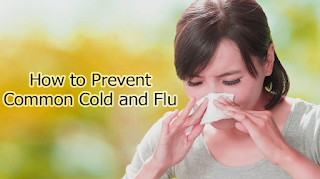How to Prevent Common Cold and Flu
Although the flu and the common cold both cause symptoms of sore throat, stuffy nose, runny nose, and sneezing, the flu and the common cold are 2 different diseases. The difference lies in the virus that causes it. Flu is a disease caused by influenza viruses type A, B or C. Meanwhile, the common cold is caused by more than 200 kinds of viruses. But the virus that most often causes the common cold is the rhinovirus. Then how to prevent common cold and flu? Please see the explanation here.
Difference between flu and cold symptoms
Although at first glance the symptoms look the same, generally the flu causes more serious symptoms than a cold. Some of the common symptoms experienced by flu sufferers include:
- Sneeze
- Stuffy and runny nose
- Throat hurts
- Fever with a body temperature of 38 degrees Celsius or more
- Body shivering
- Cough and chest pain
- Headaches and muscle aches all over the body
- The body feels tired and lethargic.
Colds also have symptoms of sneezing, stuffy and runny nose, sore throat, and coughing. However, other symptoms such as fever, chest pain, headache, or fatigue are usually milder or less frequent.
Flu symptoms often appear and worsen suddenly within a few hours. While colds have symptoms that appear gradually. This condition usually begins with a sore throat, then other symptoms such as sneezing, nasal congestion, and coughing will appear.
How to Stop Cold and Flu Symptoms
The flu and the common cold both don't need antibiotics because they are not caused by a bacterial infection. Both diseases are caused by viral infection which can improve by itself if the patient's immune system is good.
Usually antibiotics will be given by a doctor if people with flu and common cold are also exposed to bacterial infections in addition to viral infections.
How to reduce cold and flu symptoms it is recommended to rest and drink enough water so that you don't become dehydrated. In addition, some pain relievers, fever, cough and cold can also be taken to relieve symptoms. In the case of a fairly serious flu, usually the doctor will also give antiviral medicine.
How to Prevent Common Cold and Flu
Influenza viruses and viruses that cause colds are both transmitted through splashes of saliva released by sufferers when sneezing or coughing. Splashes of saliva containing the virus can be inhaled by other healthy people in the vicinity.
In addition, the splash of saliva containing the virus can also fall on the surface of objects around the patient. If a healthy person touches the object and then touches the nose, mouth or eyes, then he or she can catch the virus.
How to prevent common cold and flu can be done in the following ways:
- Diligently wash your hands with water and soap before touching the face area.
- If soap and water are not available, use a hand sanitizer product that contains at least 60% alcohol.
- Keep a distance from people who have colds and flu.
- Do not share the use of eating utensils, toothbrushes, and towels with others.
- Get the flu vaccine according to the regulations.
Although the symptoms of the flu and the common cold are similar at first glance, in general the symptoms of the flu are more serious than the symptoms of a cold. In people whose immune systems are weak, the influenza virus can cause pneumonia. Therefore, it is very important to take preventive measures.
Also read articles about: How to Boost Your Immune System Naturally
That's how to treat and prevent colds and flu. If you experience flu or cold symptoms that do not improve within 1 week, then you should consult a doctor to get the right handler.






